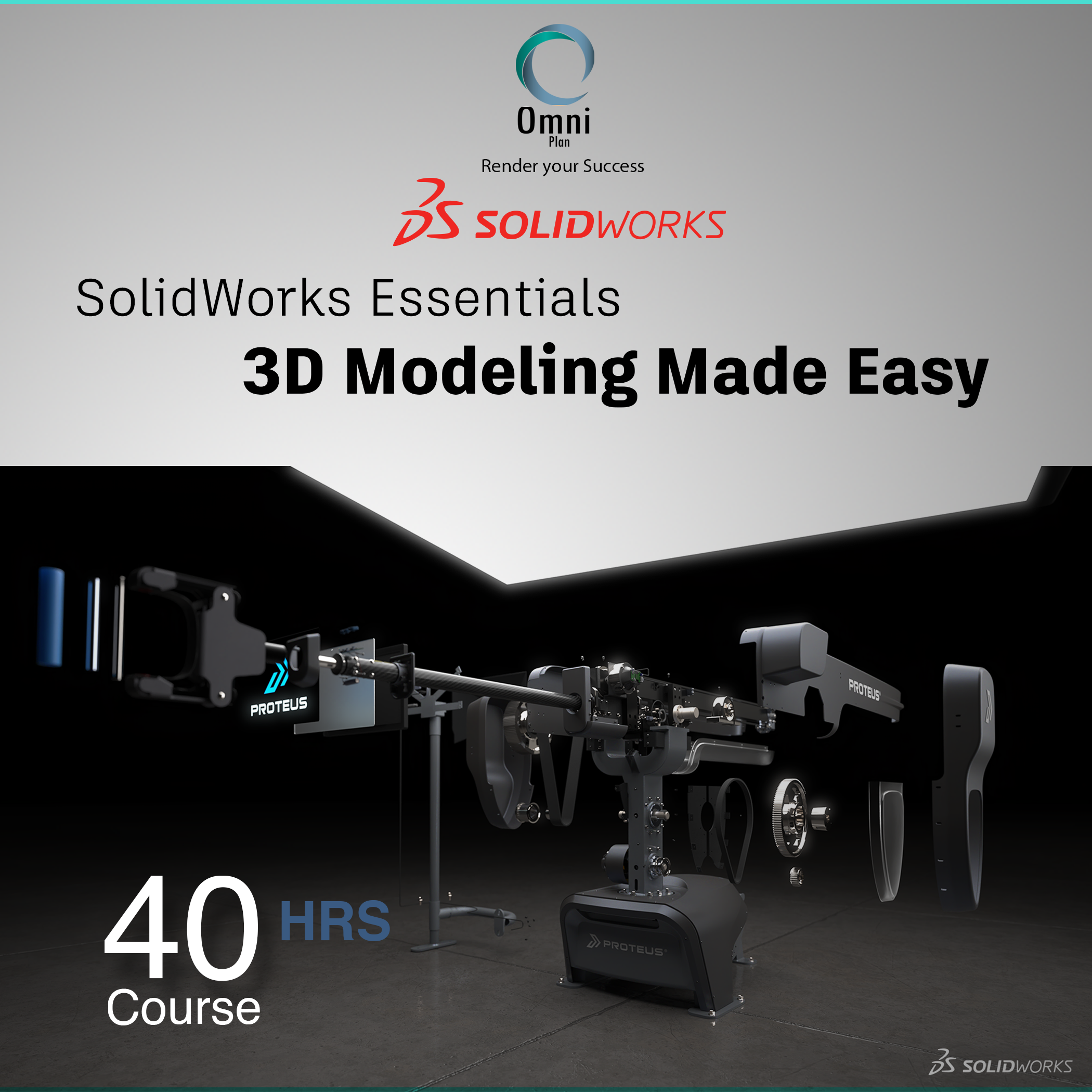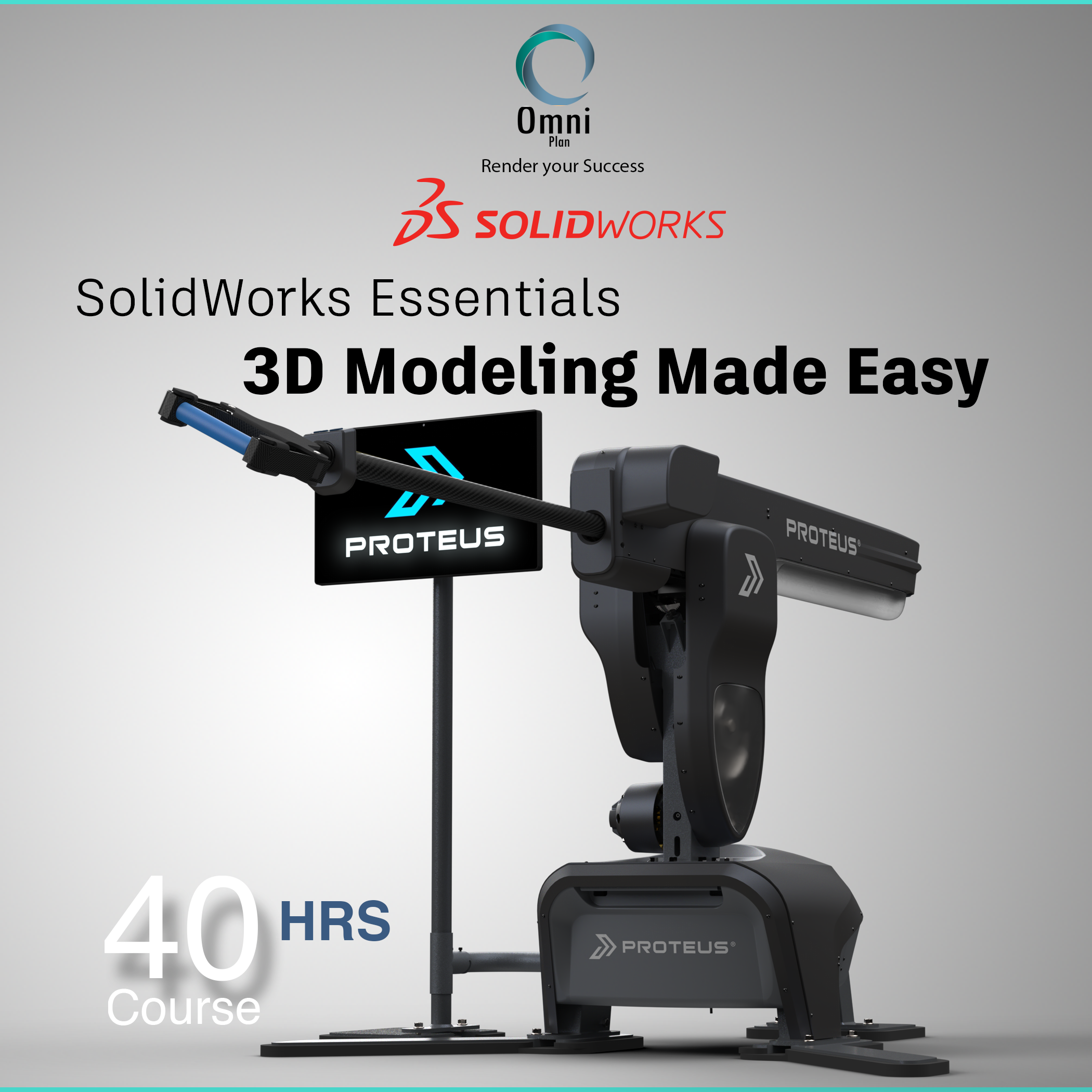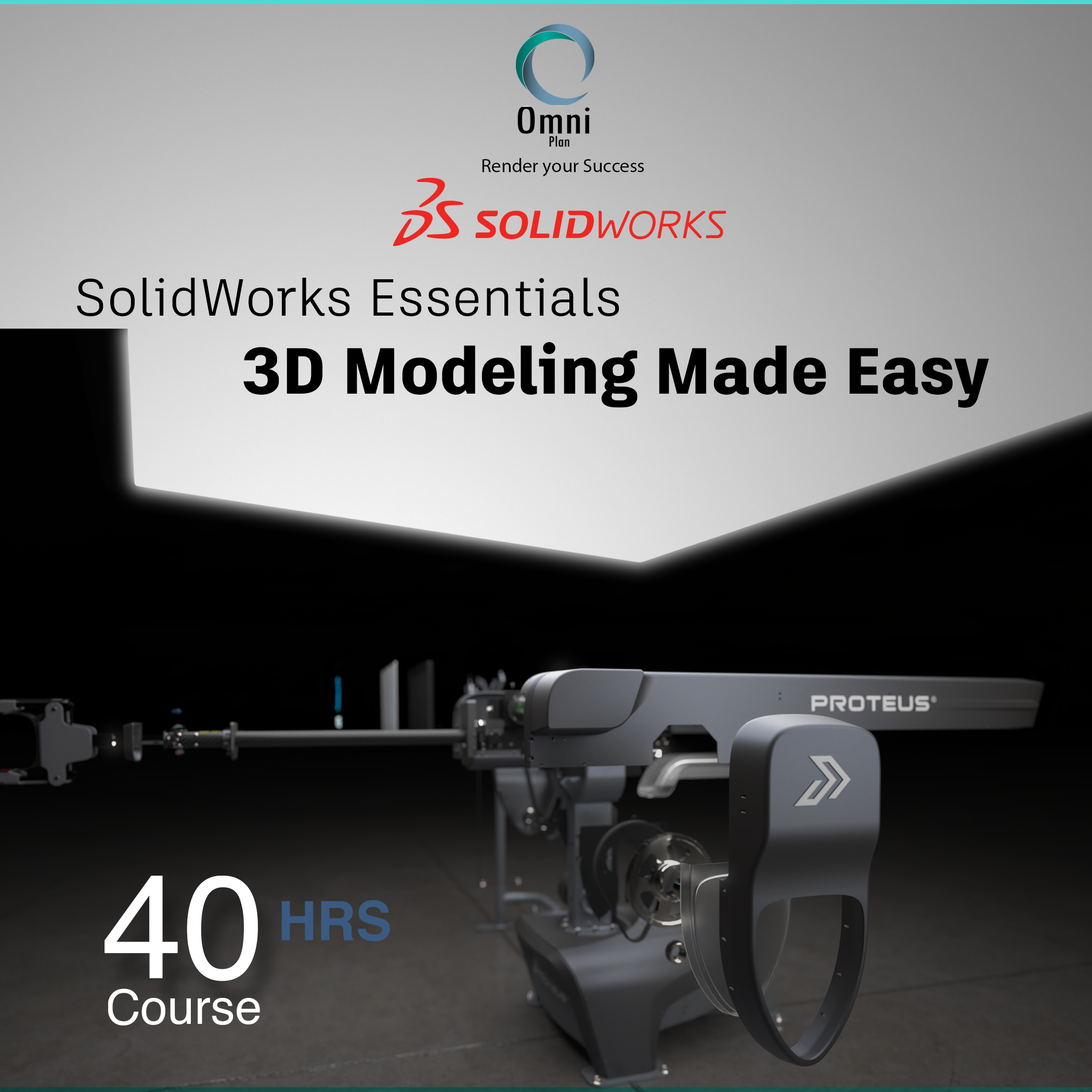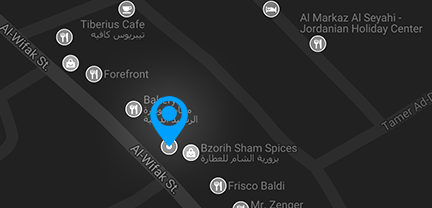SolidWorks Essentials: 3D Modeling Made Easy
Course Information
Overview
SolidWorks is an industry-leading 3D CAD (Computer-Aided Design) software used by engineers, designers, and manufacturers to create precise and parametric 3D models. It provides a comprehensive suite of tools for product development, allowing users to design, visualize, and optimize mechanical components and assemblies.
With its powerful parametric modeling capabilities, SolidWorks empowers users to create highly intelligent and adaptable designs. SolidWorks offers a full suite of tools for 3D modeling, simulation, assembly management, and manufacturing. From part design to complex assemblies and motion studies, SolidWorks enables efficient collaboration throughout the product development process. Whether you’re focused on mechanical design, sheet metal fabrication, plastic part design, or rendering and visualization, SolidWorks integrates every step of the design lifecycle, ensuring precision and streamlining the transition from concept to production-ready designs.
SolidWorks also offers certification programs for individuals seeking to prove their expertise. With certifications like the Certified SolidWorks Associate (CSWA) and Certified SolidWorks Professional (CSWP), users can validate their skills, enhance career opportunities, and gain industry recognition.
This course will equip you with the essential skills to leverage SolidWorks in real-world applications, setting a strong foundation for both professional development and certification.
The Course is certified from Dassault system
Objectives
This course will introduce participants to the fundamentals of 3D CAD parametric modeling, including part design, assembly creation, and essential SolidWorks tools. Learners will gain hands-on experience in sketching, feature creation, and assembly techniques, building a strong foundation in SolidWorks for practical design applications.
After completing this course, users will be able to:
- Navigate the SolidWorks interface and customize the workspace for efficient modeling.
- Understand the design process from sketching to creating fully defined 3D models.
- Create parametric parts using extrusions, revolves, sweeps.
- Apply material properties and analyze mass for real-world engineering applications.
- Use global variables and equations to drive intelligent design changes.
- Build mechanical assemblies using mates, constraints, and configurations.
- Detect interference and manage assembly relationships for functional designs.
- Generate simple 2D drawings and export files for manufacturing.
Audience
- Engineers and engineering students (mechanical, aerospace, industrial, manufacturing, mechatronics)
- Entry-level designers starting in product design or engineering
- Professionals transitioning to CAD from 2D drafting or other software
- Makers and Hobbyists interested in prototyping and 3D printing
- Technical professionals needing CAD skills for work
- Designers looking into Solidworks certification
Outline
- Solidworks basics
- ● What is Solidworks
- ● Solidworks interface
- ● Design Interface
- ● Using the Command manager
- ● Basic navigation (zoom, pan, rotate)
- Introduction to sketching
- ● 2D sketching
- ● What are we going to sketch?
- ● Sketching and sketch entities
- ● Sketch governing
- ● Design intent
- ● Sketch relations
- ● Dimensions
- ● Simple Extrude
- Basic part modeling
- ● Design intent
- ● Choosing the best profile
- ● Choosing the best plane
- ● Parts details
- ● Extrude features
- ● Revolve features
- ● Sketching on face
- ● Cut features
- ● Reference geometry
- ● Hole Wizard
- ● Filleting
- ● Editing tools
- Patterning
- ● Why use patterns
- ● Reference geometry
- ● Linear, circular , mirror patterns
- Shell & ribs
- ● Shelling
- ● Planes
- ● Ribs
- Configuration
- ● Edit material
- ● Mass properties
- ● Create Configurations
- ● Global variables & equations
- Assembly
- ● Creating assemblies
- ● Adding components
- ● Mates and Advanced mates
- ● Using part configurations
- ● Sub assemblies
- ● Design library
- Drawings
- ● Why use Drawings
- ● Section , Model, Broken, Detail and projected views
- ● Annotation
- ● Dimensioning
- ● Drawing Sheets
- ● BOM (Bill of material)
- ● Balloons




